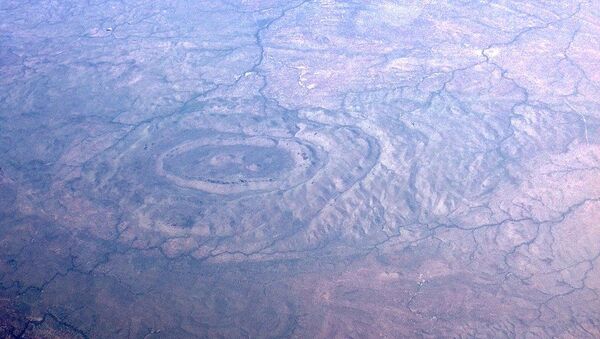The discovery that Australia's Wolfe Creek Crater might be 120,000 years old, not 300,000 as was thought before, suggests that Earth could be much younger than believed, the German outlet Futurezone.de reports.
Examining craters like the one in the Australian desert helps to estimate how often meteorites similar to the 15-metre-wide iron mass that made the Wolfe Creek Crater strike planets and large objects in the Solar System, as well as to calculate their age. This goes for the Earth, Mercury, and the Moon, too.
The scar left on the surface of our planet in Australia is the second-largest crater on Earth where real fragments of a meteorite have been found, something which has helped scientists peek into a bygone era thousands of years ago.
“The first one was to get some rocks from the crater rim which had been ejected when the meteorite hit, and this creates a fresh surface that gets exposed to radiation, and we can determine how long that exposure has been for. The second technique was to look at the dune field which had been deflected by the crater", Professor Tim Barrows of the University of Wollongong said, explaining how they came to their striking conclusion.
To estimate the age of planets, like Earth and Mercury, scientists use a technique called "crater counting". It counts such scars and compares them with estimates of how often other celestial bodies hit planets.
If a crater is younger than expected, the number of objects hitting Earth increases and the age of the planet decreases. It has been estimated that meteorites or similar celestial bodies strike our planet approximately every 180 years, including the latest strikes, one in a Siberian forest near the Tunguska River at the beginning of the 20th century and the other also in Siberia, near the city of Chelyabinsk, in 2013.
The outlet notes that the discovery in Australia, which has shown that earlier estimates were mistaken, could mean that other craters in our solar system that have been examined so far may be of a completely different age, potentially proving calculations of the age of the Earth and other planets wrong.


